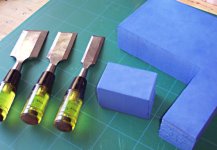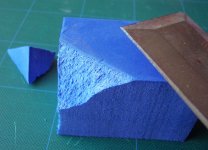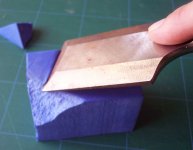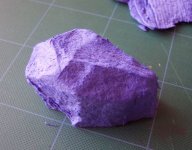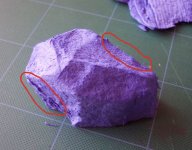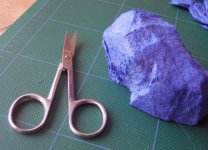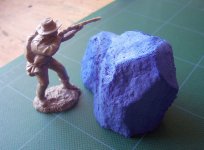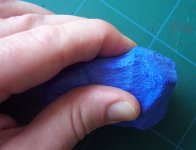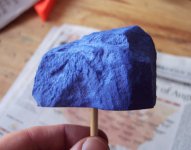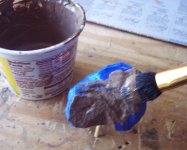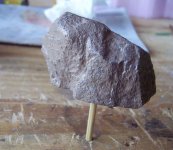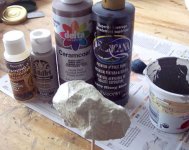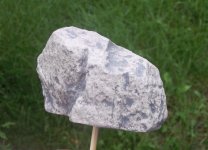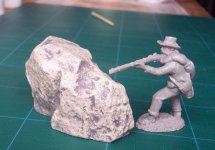D
Dave@Traverse
Guest
A couple weeks ago, I promised to post a "How To" on using Flex Foam material to create diorama elements. Here's the first installment.
Today, I'll walk through how to make a simple boulder, shaping it out of the foam and then detailing it.
Why make a boulder when you can easily grab a stone from your neighbor's landscaping? Good Question. Real rocks will often do, but if you want to display a large boulder, or a number of boulders, the real thing gets real heavy real quick. The flex foam is much lighter, easy to affix to your substrate, and can have a flat base, an important feature if you want to easily depict a boulder protruding from the earth. You also have more control over size and shape, since you're making it from scratch.
So those are my reasons, and there's more that have to do with the exact nature of the flex foam. I'll post a followup comment that describes the material in more detail.
Today, I'll walk through how to make a simple boulder, shaping it out of the foam and then detailing it.
Why make a boulder when you can easily grab a stone from your neighbor's landscaping? Good Question. Real rocks will often do, but if you want to display a large boulder, or a number of boulders, the real thing gets real heavy real quick. The flex foam is much lighter, easy to affix to your substrate, and can have a flat base, an important feature if you want to easily depict a boulder protruding from the earth. You also have more control over size and shape, since you're making it from scratch.
So those are my reasons, and there's more that have to do with the exact nature of the flex foam. I'll post a followup comment that describes the material in more detail.


